Understanding is hard.
Has there ever been a situation where the other person completely misunderstood what you were saying?
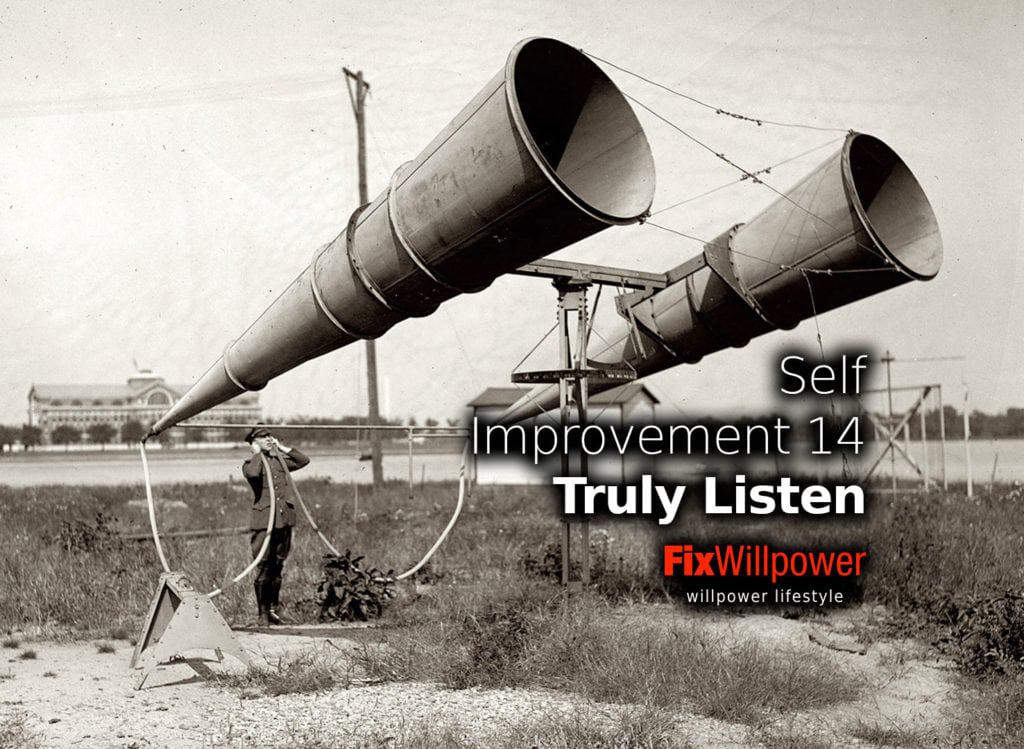
If you want other people to trust you, then listen to what they have to say. If you want to be understood, then you also have to listen.
In a conversation, we are often focusing on what to say next or how to cut in, not what the person is actually talking about. It’s all about me, me, me…
What is active listening?
When you give your full attention, they will feel that. Your conversation partner will perceive you as an intense listener who’s really interested in the conversation. You will get a deeper understanding of your conversation partner and learn to see the point of view of other people.
This is active listening.
Listening is one of the most undervalued skills that everyone thinks they have mastered. When you seek to understand the other person’s point of view, then focus on that.
But listening is like any other skill. You can learn to listen and then practice listening to become a better conversation partner. Watch this video Julian Treasure for some compelling arguments:
Below I have listed the five techniques that help you become a better listener. Write them down, make flashcards, or use other tactics to internalize and master the listening skill. Internalize the steps how to truly listen to someone.
5 steps how to truly listen
In our louder and louder world, says sound expert Julian Treasure, “We are losing our listening.” In this short, fascinating talk, Treasure shares five ways to re-tune your ears for conscious listening — to other people and the world around you. Here are the 5 steps to a conversation:
1. Fully focus on your partner
First, focus fully on your conversation partner. If you have tried meditation, then approach listening the same way. Replace the focus on yourself and your body with full attention on the person you are talking with. Don’t think what you will say next, think only about what they are saying.
Truly listening requires considerable mental effort, and you have to remind yourself to focus as your thoughts are trying to jump to other matters. Willfully bring your attention back to your partner every time the mind starts to wander. Listening intently is like mindfulness meditation.
You will lose focus more often than you think possible, and if you are not careful, you’ll forget to bring your focus back to the conversation and your partner.
How to give your brain something to do that relates to the conversation and the person you are talking with? The following are the different aspects that help you build context and understand the other side better.
In your next conversation, focus on your partner. Do not think about what you will say next. Whenever your mind drifts to crafting answers, go back to the focused listening mode.
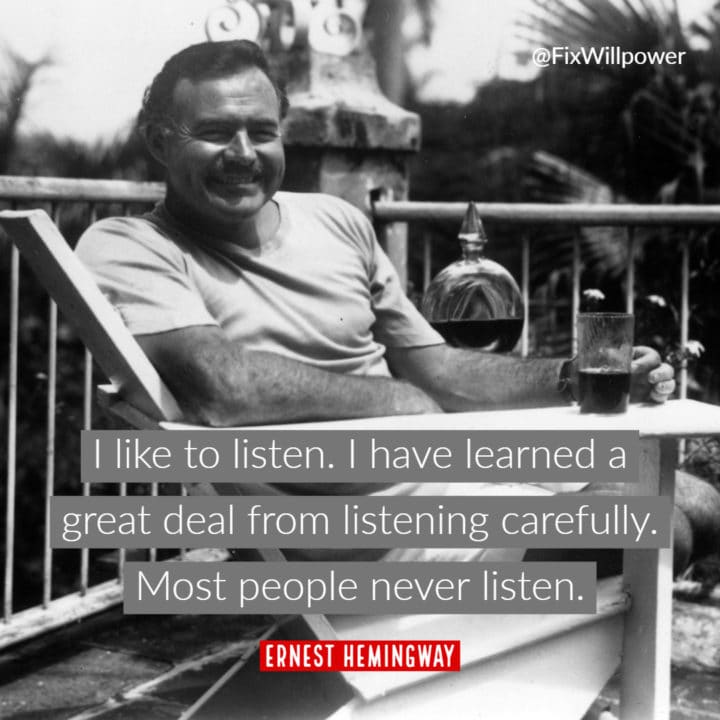
I like to listen. I have learned a great deal from listening carefully. Most people never listen. ~ Ernest Hemingway
2. The tone of voice
The tone of voice will speak volumes about how the words are meant to be taken. Happy, angry, funny, ironic, sad, etc. The same sentence may have an opposite meaning depending on how the speaker is saying it. Their pronunciation may give clues to their origins. How they speak adds to the understanding of how this may relate to the subject of the discussion.
Maybe someone has a tone of voice that distorts their message?
Perhaps they always sound angry without even realizing it.
If you can detect that and act accordingly, then you may have just made a lifelong friend. But always remember that you may interpret the tone of voice incorrectly. Always assume positive intent in the beginning.
Remember that you lose a lot of this information when you communicate through email. I have had situations where my email message has had an opposite effect of what I was expecting. Then I had to call the person to sort things out.
Focus on the tone of voice and listen to understand how it interacts with the content of what the other person is saying.
3. Facial expressions
The expression on their faces may have some clues about their attitudes. However, do not take expressions at face value. You may mistake concentration for anger or relaxation with arrogance. Combine the different aspects to get a coherent picture.
Along with the face, look at what their body is saying. Are they laid back and relaxed or on the edge? Are they leaning in or keeping their distance?
For example, there’s the “angry bitch face.” Some people may appear angry when they focus or think deeply. The expression on their face has nothing to do with you, and sometimes people are unaware that they seem angry or even disrespectful to others.
The opposite is also true. Some people always smile.
Focus on and try to see through the body language and facial expressions. You will get more information and may make new friends.
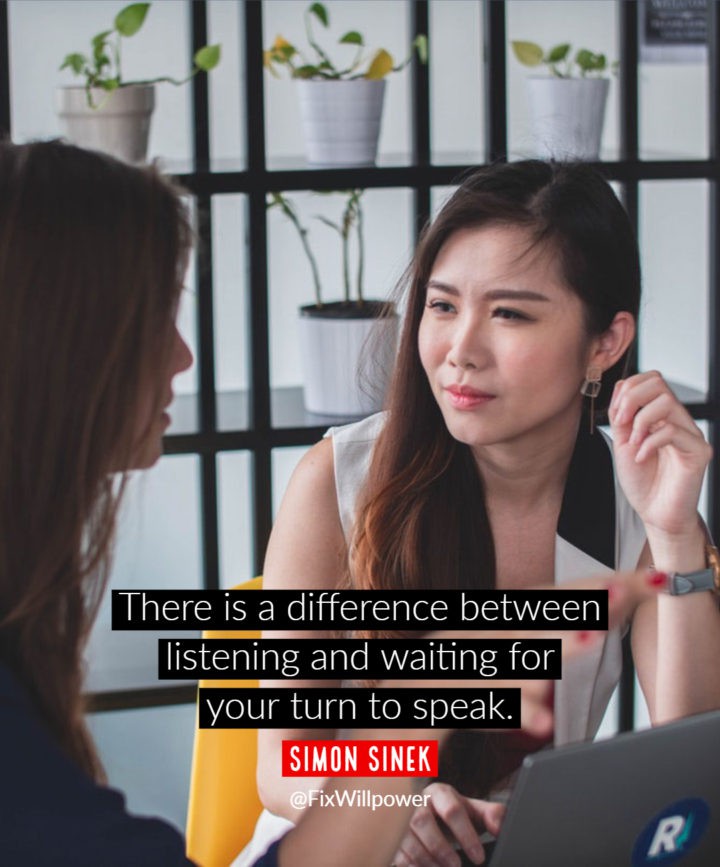
There is a difference between listening and waiting for your turn to speak. ~ Simon Sinek
7% 38% 55% rule and where it applies
According to Albert Mehrabian, the three elements account differently for our liking for the person who puts forward a message concerning their feelings:
- words account for 7%,
- tone of voice accounts for 38%, and
- body language accounts for 55% of the liking.
People have misrepresented this study countless times and there’s even a disclaimer on his website:
Please note that this and other equations regarding relative importance of verbal and nonverbal messages were derived from experiments dealing with communications of feelings and attitudes (i.e., like-dislike). Unless a communicator is talking about their feelings or attitudes, these equations are not applicable.
4. The details
What words and phrases do they use?
- This or that
- Goal or objective
- Soda or pop
Take it in and weave it into your understanding of the topic and the person. Focusing on the words people use helps you get closer to them. We tend to like people who use similar language and intonation.
The speed of their speech may hint at their emotional states. Are they talking fast because they are nervous, angry, or excited? Is the lack of emotion because of thoughtfulness or boredom?
Are they happy to see you, or maybe they are in a hurry and actually want to get away from the conversation you are having? If you sense nervousness, do something to defuse the situation.
Before having a conversation, focus on the other person’s use of language and emotional state.
5. How to listen to understand
Seek understanding, but don’t try to decipher all the signals you have collected. The mental load will lead to losing focus and defeating the point of this exercise. You want to be the sponge but leave the processing for later.
Do not judge and be on their side. You have all the time in the world to change sides and confront them. Start with the acceptance and attempt to see their side of the issue. If something is unclear, ask for more details to fill blanks. If something seems contrary to what you believe, ask for an explanation. Make them talk more by asking:
- and then,
- really,
- did I get that right,
- how do/did you feel about that, etc.
You can apply this to any exchange — the 3-hours long philosophical discussion with the friend, the meeting with the client, or the brief encounter with the checkout clerk. The key is to focus, not criticize and seek understanding, so your conversation partner feels your interest and respect.
Learn the phrases that help you get the other person to open up and share details. Use flashcards or come back to this post after a week and reinforce what you have learned.
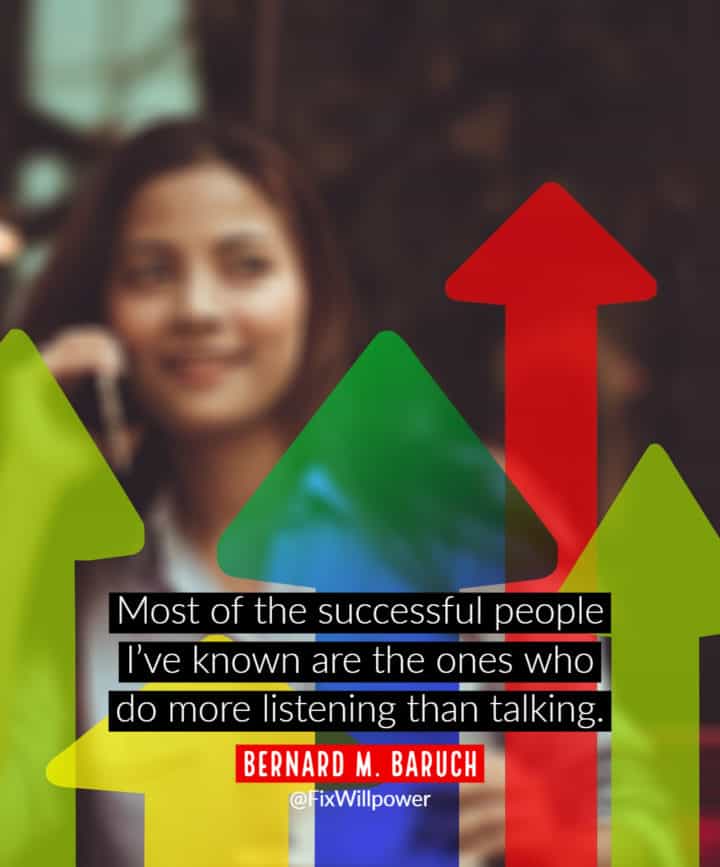
Most of the successful people I’ve known are the ones who do more listening than talking. ~ Bernard M. Baruch
Listening as mindfulness meditation exercise
If you have tried mindfulness meditation, then you may try listening to others as a mindfulness meditation technique.
For those who haven’t tried mindfulness, it’s a form of meditation where you focus on the present moment. People often focus on their breathing. Another technique is the body scan where you focus on the parts of the body and immerse in the feeling.
You can do the same thing when listening to another person.
The key is to focus on what they are saying and how they do it. Do not pass judgement or think what you will say next.
As your conversation partner probably expects an answer, focus on understanding what they said. Ask questions to get a deeper understanding.
One trait that may help in meditative listening is curiosity. You want to find out what the other person is thinking and how they became to be in that position.
It’s easy if you do it with people who share your views but do it with people who don’t believe the same things you do.
For example, different religions, atheism, shape of the earth, free health care, Mac versus PC, etc.
Truly listening will help you understand the other side better than they do. Then you can change their mind, or maybe your own.
It’s valuable to see things from a different perspective.

Wiio’s law: Communication usually fails, except by accident. ~ Osmo Antero Wiio
Combine the 5 aspects of listening
Focus on your conversation partner and avoid thinking about your talking points. In the beginning, it may be difficult to focus on all the aspects of your partner. Start with any of the three key aspects.
For example, start with facial expressions. These would probably be the easiest to follow. As you begin to get the hang of it, add another level. What tone of voice goes with what expression? After that, you can add the details of how and what they are saying.
Sometimes it’s blindingly obvious “Hey, dude” versus “Excuse me, sir.” Other times, it may be as subtle as catching a slight difference in how they use specific words.
As you get better at listening, you will gain a deeper understanding of the other person.
Now check out the other posts that help you understand people better:
- Look at Things from a Different Perspective
- Call An Old Friend
- Talk to People and Solve Your Problems
Now resolve to focus on conversations for just one day and see what happens.
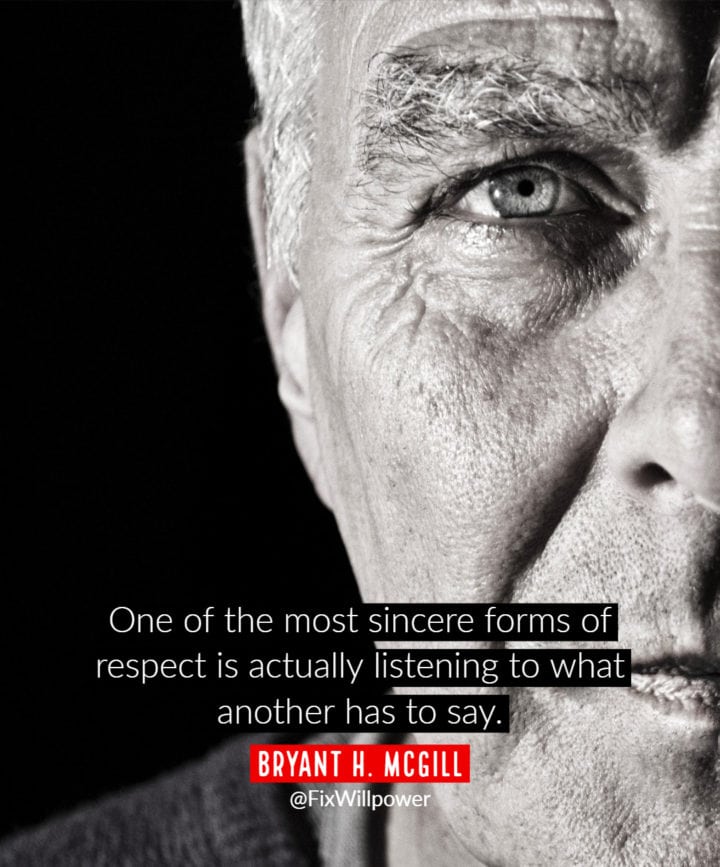
One of the most sincere forms of respect is actually listening to what another has to say. ~ Bryant H. McGill
________________________________________
Image: Giant listening device by James Vaughan
Image: Ernest Hemingway at the Finca Vigia, Cuba 1946 by Wikimedia Commons
![Read more about the article How to Stop Watching TV? [and Improve Your Life]](https://fixwillpower.com/wp-content/uploads/stop-watching-tv-429x314.jpg)
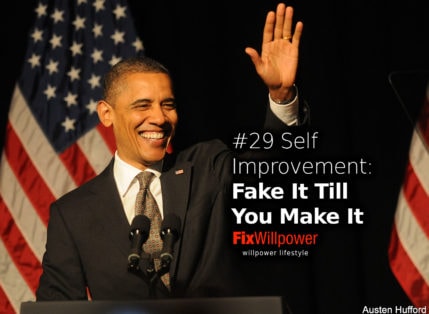

![Read more about the article Take a Day Off to Enjoy Your Life [Regularly]](https://fixwillpower.com/wp-content/uploads/take-a-day-off-429x314.jpg)
Pingback: 10 Survival Skills for Knowledge Worker | Fix Willpower